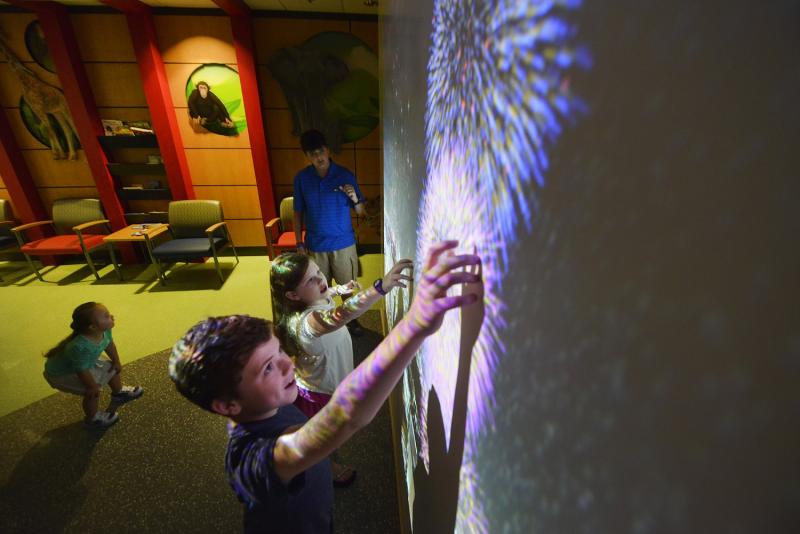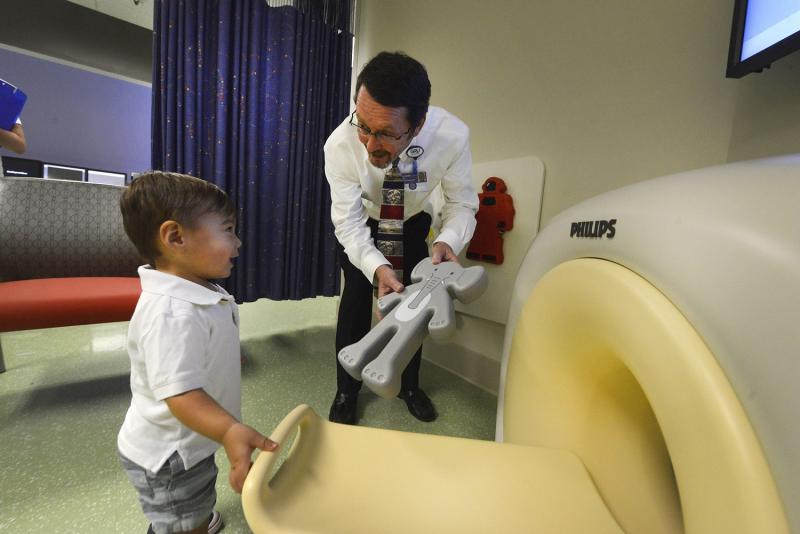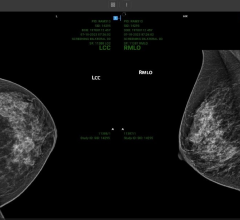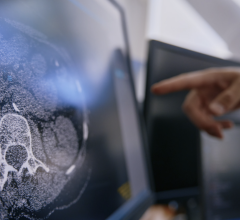
Greg Freiherr has reported on developments in radiology since 1983. He runs the consulting service, The Freiherr Group.
How Putting Patients At Ease Can Improve Care

Children awaiting imaging studies play at an interactive wall in Children’s Hospital of Georgia.
It looked like the autistic child at the Children's Hospital of Georgia at Augusta University (AU) Health would have to be sedated. Showing extreme apprehension, the young boy flatly refused to even go into the CT suite, staff recalled. That changed after the child "scanned" a foam elephant with the Philips KittenScanner.
"It has a way of explaining things that children can understand," said Julie G. Moretz, AU Health assistant vice president of Patient- and Family-Centered Care.
The KittenScanner can tell several different stories, depending on the foam toy — elephant, chicken, alligator or robot — chosen by the patient. Reading the computer chip embedded in the foam elephant, the KittenScanner told the autistic child the faux animal's "tummy ache" was caused by fish in its drinking water.
Just as the KittenScanner found the cause of the elephant's troubles, a technologist said, the CAT scanner in the next room might help doctors figure out what was bothering the little boy.
The pretend CT scanner, which stands about as tall as the children who play with it, is an example of patient- and family-centered care at AU Health in Augusta, Georgia. As implemented in the pediatric imaging department, this type of service helps both the efficiency of staff and the patient experience, Moretz said.
Putting the Patient First
Happy and comfortable patients cooperate, which is important for creating a better patient experience, as well as keeping patients safe, Moretz explained. They hold still, so motion artifacts don't degrade images, which can reduce the need for more scans. Their exams are quick, which optimizes patient throughput. And working together with patients and their parents to keep them happy and safe helps Children’s Hospital of Georgia keep its patients coming back.
"Anytime we can make them feel like they're being heard and included as part of the health care team, then it’s not so scary to come back," she said.
A couple years ago, when redesigning the pediatric imaging suite, a multidisciplinary team of experts from the radiology department and the AU Health-Philips alliance completed an in-depth, on-site analysis and gathered input from patients, parents and staff to define clinical, functional and emotional requirements for the new pediatric radiology suite. Designers considered surveys detailing what patients and parents liked and didn't like; spoke with radiology staff; even wheeled architects on gurneys through the department to give them a "patients' eye view."
AU Health staff noticed, for example, that warm blankets make scans easier on the patient. Designers moved the blanket warmer closer, so technologists didn't have to leave patients unattended. Ceilings were raised so clouds and forests could be painted above the equipment; "non-hospital" lights were installed with colors that could be chosen by the patients; and an interactive "video wall" was wired into the patient "waiting lounge."
With its 80 different distractions, the wall is the centerpiece of the Children’s Hospital imaging suite. Children hop up and down to pop balloons or pick apples from trees. They watch waves ripple across a puddle; corn kernels pop; fireworks explode.
"You will always see a child standing there playing," Moretz said. "You can also see adults standing there playing — looking around to see if anybody is watching them."
Calm Before The Exam
Like the wall and other gadgets in the pediatric imaging department, the KittenScanner engages patients. It takes the mystery out of the CAT scan; empowers children with information; and distracts them.
Little things can have a big effect, like "kid-sizing" counter tops and tables; or letting children control the color of lights. The parents of pediatric patients "feel better," said Moretz, when they see their children relax.
Not surprisingly, children who must return to Children’s Hospital of Georgia for follow-up exams look forward to their visits, she said. So engaging is the video wall, for example, that some patients hesitate when called for their exams. Staff have a fix that fits the character of their patient-centric approach.
"Staff tell them, wait till you see what you can do in the next room," Moretz said.
The award-winning redesign included extending the upbeat atmosphere of the waiting lounge to "waiting nooks." Located just outside the exam rooms, these nooks are where patients and their families prepare for imaging exams. Children can choose non-hospital lighting — pink, lime green or "rainbow." And they can play sounds, like wind blowing or waves crashing.
This gives children a sense of control exactly when they need it most. The proximity of the nooks is similarly calming. "While a parent may be with their child during an exam, it makes the experience better (when they) know that other family members are right outside the door," said Moretz, who noted that family presence is an important aspect of patient- and family-centered care.
Touch panels in the walls of the imaging suites encourage pediatric patients to choose the lighting and sounds during their exams. And, of course, those nervous about getting a CAT scan can play with the KittenScanner beforehand.
Vendors, like all stakeholders at AU Health, must respect "patient voices and our patient- and family-centered values," Moretz said. Vendors have to be prepared to "operationalize the mission and the vision that we expect as our standard of care," she said. "That is where the philosophy of patient- and family-centered care comes into practice."
For more information about Philips patient- and staff-centered imaging solutions, visit www.philips.com/radiology



 April 16, 2024
April 16, 2024 








